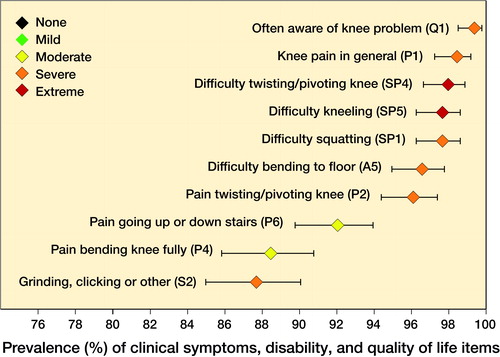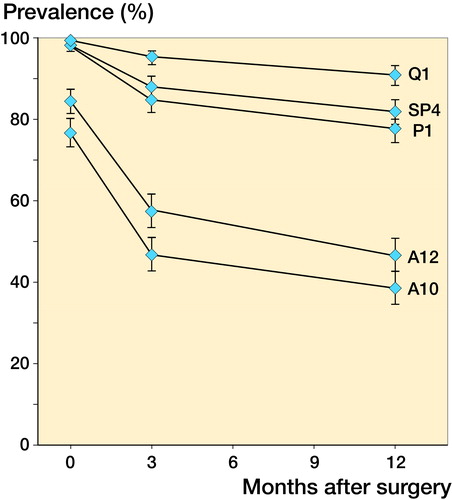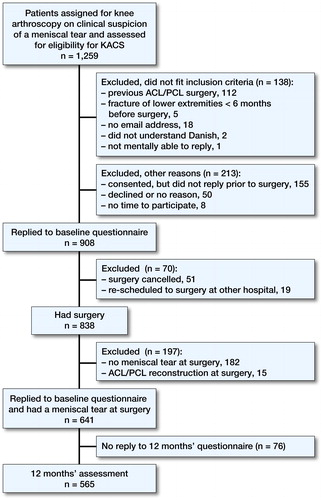Figures & data
Table 1. Patient characteristics at baseline
Figure 2. Prevalence (95% CI) and severity of the 5 most common clinical symptoms and five most common limitations and quality-of-life items in patients with a meniscal tear considered eligible for meniscal surgery (n = 641). Severity (color of the data points) is the most prevalent of the 5 levels of severity on the Knee Injury and Osteoarthritis Outcome Score (KOOS).

Table 2. Prevalence and severity of the 5 most common clinical symptoms in the full group and the subgroups at baselineTable Footnotea
Table 3. Prevalence and severity of the 5 most common functional limitations and quality-of-life items in the full group and the subgroups at baselineTable Footnotea
Figure 3. Prevalence (95% CI) of the 5 self-reported clinical symptoms and limitations and quality-of-life items mostly improved at 12 months after arthroscopic meniscal surgery at baseline, 3, and 12 months in patients with a meniscal tear considered eligible for meniscal surgery (n = 557). Letters and numbers in front of each variable refer to item identification from KOOS. Q1: Often aware of knee problem; SP4: Difficulty twisting/pivoting; P1: Knee pain in general; A12: Difficulty lying in bed; and A10: Difficulty rising from bed.

Table 6. Outcome from baseline to 12 months for the 5 clinical symptoms and limitations and quality-of-life items mostly improved after arthroscopic surgery in the full group and for patients of 40 years of age or younger and patients older than 40 years of ageTable Footnotea

